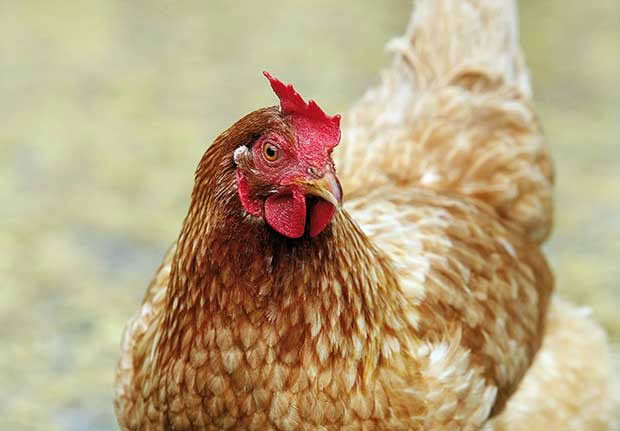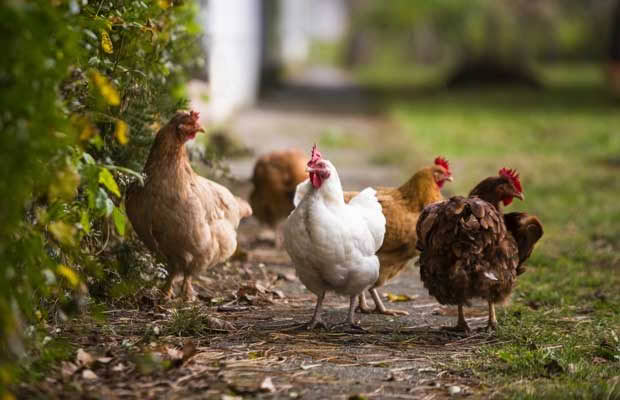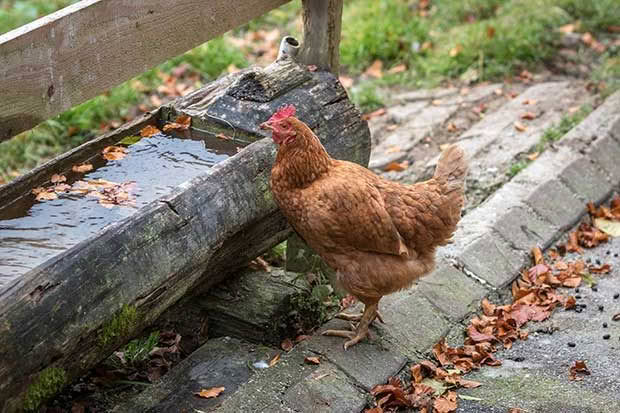Signs your chickens might have gapeworm PLUS how to treat it

If your bird is coughing and gasping, it could be a sneaky little worm.
When NZ Lifestyle Block reader Martin saw his Araucana hen Goldie gasping for breath, making funny rasping noises and shaking her head, he thought she might be thirsty. The only problem was, there was plenty of water available.
Goldie was still eating, drinking, and moving with the flock. She wasn’t sneezing or coughing, and seemed fine the rest of the time.
However, after a particularly bad attack of gasping, Martin got in touch with NZ Lifestyle Block‘s poultry expert Sue Clarke if she had any thoughts on what might be wrong.
“If a hen doesn’t have any other symptoms of a respiratory problem (ie, runny nose, sneezing, coughing, runny eyes), then my first immediate thought is gapeworm,” says Sue.
“It’s a parasite that lives in the flesh of the bird’s throat and causes intermittent wheezing and gasping.”
Many people mistake the difficulty a bird has with breathing as some kind of respiratory infection and may give their birds an antibiotic. This won’t help if it’s gapeworm and the bird will continue to deteriorate.

Male and female gapeworm spend their lives joined to each other, embedded in the throat of a bird. They feed off it, creating eggs that pass through the bird or are coughed out so the next generation can be eaten up by flies, earthworms, slugs and snails. These then infect more members of the flock when they are eaten.
Gapeworm can become so numerous they actually block the throat of an affected bird, stopping feed, water and eventually air from passing through, causing death. All types of poultry can be affected, including water fowl and game birds, especially pheasants.
SYMPTOMS
The symptoms of Syngamus trachea are obvious from its Latin name (trachea=throat) and its common name, gapeworm. The first sign is a bird that is breathing with its mouth open (gaping), usually with its neck extended upward as it literally gasps for breath, often making a hissing sound.
Other symptoms: coughing, fast head-shaking (trying to clear its throat), loss of appetite, loss of condition, weakness, emaciation, grunting due to difficulty breathing.
Young birds get weak and deteriorate very quickly if badly affected. Adult birds tend to show fewer obvious signs, and some may show no signs at all.
Causes of death: suffocation, dehydration/starvation.
Necropsy: long, bright-red worms, shaped like a Y, 5mm-20mm long, clumped in the trachea.
Treatment: Flubenol, a powdered worming product (available online), or Aviverm (large birds), a specialist liquid bird wormer (available from vet clinics, pet stores, and online).
Ongoing treatment: gapeworm is incredibly hardy, and will remain viable in the soil for more than four years, infecting and reinfecting a flock. They are particularly dangerous to young birds, so rotation of pens is important. Better yet, if you can, quarantine all young birds from adults as a good preventative measure. Rotary hoeing of soil and control of fly, snail and slug populations can also help prevent reinfection.

TREATING BIRDS WITH WORMS
What reader Martin discovered was you can get a bird to medicated water, but making it drink is a whole other problem. He used the recommended dilution of Aviverm for large birds ($17-$18 for a 50ml bottle) diluted in Goldie’s drinking water. Weigh your bird, then work out a dose and add it to drinking water.
In this instance, for treating gapeworm, it’s important to use Flubenol or Aviverm as they contain the chemical levamisol which works to kill the adult worms. Ivermectin-based products will not kill adult gapeworms. Treat all your birds, not just the ones showing symptoms.
In Goldie’s case, she didn’t drink any of the water with the Aviverm in it, so Martin mixed up some of the diluted water with wet kitten food which she then ate. Aviverm can be used in a second dose 24 hours later in a severe case.
A couple of weeks later and Goldie’s owners reported back that their formerly quite scatty bird was now doing a lot better, had stopped gasping and was now very happy to come up and eat out of their hands.
Love this story? Subscribe now!
 This article first appeared in NZ Lifestyle Block Magazine.
This article first appeared in NZ Lifestyle Block Magazine.
